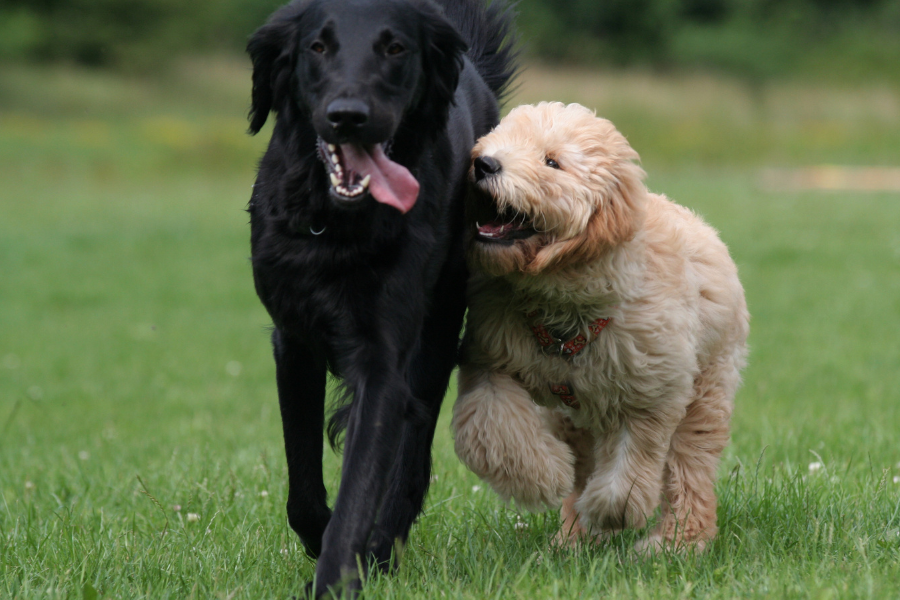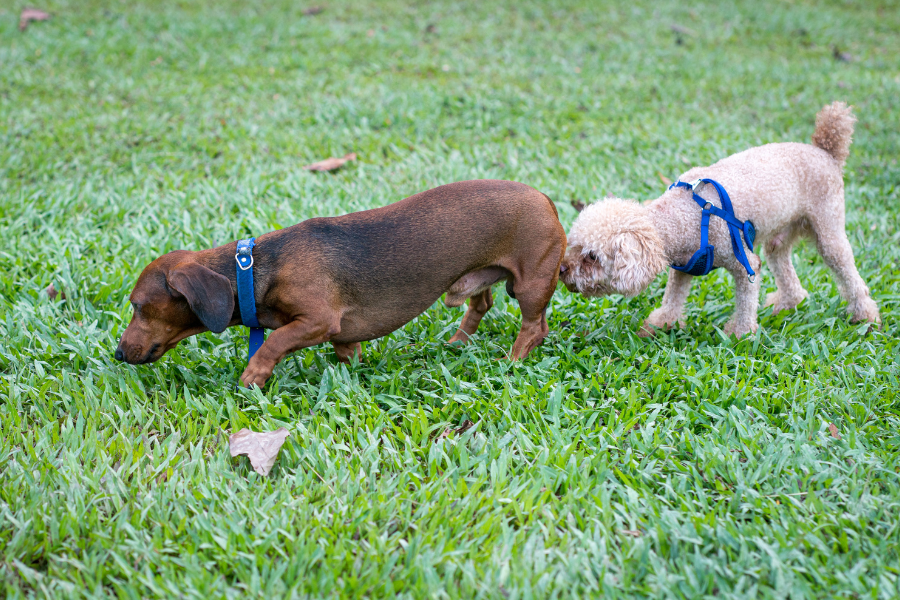Ever wondered if your furry friend has a color preference? You're not alone! This question barks up an interesting tree, considering most of us have pondered what the world looks like through the eyes of our canine companions. Sure, you might have heard the old tail that dogs only see in black and white, but recent studies suggest there's more to their color perception than meets the human eye.
Today, we’re going to sniff around this colorful topic to discover what hues make your dog’s tail wag with joy. Whether you're picking out a new toy or rethinking the color of your dog's bed, understanding their color preferences can add an extra dash of happiness to their lives. And who doesn't want to be the ultimate dog whisperer?
Here's the scoop, fellow dog lovers. After our deep-dive into the technicolor world of dog vision, we've fetched some key takeaways that'll have you and your pup seeing eye to eye in no time.
Key Takeaways
- They're Not Colorblind! Contrary to popular belief, dogs can see colors, just not in the same way we do. While they might not appreciate the full spectrum, their world is not just black and white.
- Blue and Yellow for the Win! Research has shown that canines can distinguish between various shades, with blue and yellow being the front-runners. Next time you go toy shopping, you might want to lean towards these colors.
- Cool Toys Matter. Recognizing that dogs can see certain colors can make toy selection not only fun but also stimulating for them. A blue ball on green grass? That's a surefire way to catch their attention!
- Comfort in Colors. When it comes to bedding or blankets, picking out items in your dog's visible spectrum can make their resting spot even more inviting.
The Colorful Truth About Dog Vision
First off, let’s debunk a myth: dogs do see colors, just not the way we do. Their world isn’t a rerun of old-timey films; it’s more akin to our dusk vision, where certain colors stand out more than others. Canine vision is similar to color vision deficiency in humans. While they can't appreciate the full spectrum, dogs can indeed distinguish between various shades.
What’s the Palette in a Dog's Eye?
Dogs see the world through a simpler palette – primarily in shades of blue and yellow. The retinas of their eyes are equipped with two types of color receptors, or cones, designed to pick up these colors. Reds and greens? Not so much. These colors might appear more as shades of grey to your pooch. Interestingly, this means picking out toys or accessories in blues and yellows might catch their eye more!
The Tail-Wagging Favorites
Given their unique vision, it's likely that dogs are drawn towards toys and objects that are blue and yellow. This could explain why that neon yellow tennis ball is a hit at the dog park every time. But, don’t think this limits your options! The intensity of a color or its contrast against another color (think blue toy on green grass) can also make an item more appealing to your dog, even if it's not in their direct color wheelhouse.
Does Color Preference Vary by Breed?
Now, this is a bone of contention among experts. There's not much evidence to support the idea that breed affects color preference significantly. More than the breed, it's about the individual dog's experiences and associations with certain colors. For example, if a dog has had positive experiences with a blue toy, they might be more inclined to pick a blue toy in the future.
Incorporating Color into Your Dog’s Life
Here are a few tips to add a splash of dog-approved color into your furry friend's life:
- Choose Toys Wisely: Opt for toys in blues and yellows to make playtime more visually stimulating for your pooch.
- Think About Visibility: If you’re playing fetch, remember that a blue object might stand out against a sea of green grass, making it easier for your dog to spot.
- Experiment with Food Bowls: Some suggest that using colored bowls might impact how appealing the food seems, although your dog’s nose probably plays a bigger role here. Still, a blue or yellow bowl could be a fun experiment!
Is Your Dog's Vision in Check? Here’s What to Do!
Worried your doggo might not be seeing the world in all its technicolor glory—or maybe you're concerned they're not seeing much at all? First off, don't panic. It's paw-sitively amazing what dogs can adapt to. But, it’s important to keep an eye out (pun intended) for signs that their vision might be changing.
- Catch the Clues: Is your furry friend bumping into furniture or having trouble finding their toys? Maybe they’re hesitant to go down stairs or into dark rooms. These could be signs that their vision is getting a bit fuzzy.
- Vet Time: If you notice any of these signs, or just feel something’s off, make an appointment with your vet. They can perform a thorough check-up to see what’s going on. Remember, early detection is key to managing any potential issues.
- Special Care for Senior Pups: Older dogs are naturally prone to vision changes, including cataracts. Keep routine vet visits to monitor their eye health as they age gracefully.
- Create a Safe Space: If your dog's vision is impaired, you can help by keeping your home safe and navigable. Avoid moving furniture around too much and keep their essentials—like food, water, and bed—in consistent places.
- Keep Engaging: Dogs are incredibly adaptable and rely on their other senses to make sense of the world. Continue playing and exploring in ways that are safe for them, focusing on toys that make noise or have different textures they can enjoy.
Worry not! With a bit of extra care and attention, dogs with vision impairment can live full, happy lives. Plus, they've got a superhuman (that's you!) to help guide them through. Let's keep those tails wagging, no matter what!
The Takeaway
While your dog might not appreciate the rainbow in all its glory, they certainly aren’t living in a world of black and white. By understanding what colors resonate most with them, you can make choices that enhance their playtime and overall well-being. And the best part? Exploring this doesn’t require a lab coat—just a love for dogs and a willingness to view the world a little more like they do.
Whether you’re dressing them up in a cozy blue sweater or tossing them a sunny yellow ball, paying attention to color can brighten up your dog’s life. Just imagine the photo ops!
Now, we’d love to get your paws on feedback – have you noticed your dog showing a preference for certain colors? Do they have a favorite toy that fits into the blue and yellow theory? Share your experiences and tips with fellow dog lovers below. After all, when it comes to showering our pets with love, it’s all hands (and paws) on deck!
References
1) Siniscalchi M, d'Ingeo S, Fornelli S, Quaranta A. Are dogs red-green colour blind? R Soc Open Sci. 2017 Nov 8;4(11):170869. doi: 10.1098/rsos.170869. PMID: 29291080; PMCID: PMC5717654.



